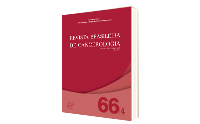Tendências de Incidência e Mortalidade por Câncer de Ovário nos Países da América Latina
DOI:
https://doi.org/10.32635/2176-9745.RBC.2020v66n4.813Palavras-chave:
Neoplasias Ovarianas/epidemiologia, Neoplasias Ovarianas/mortalidade, Incidência, América Latina/epidemiologiaResumo
Introdução: O câncer de ovário é o sétimo mais comum e a nona causa de morte por câncer em mulheres, no mundo. Na América Latina, o câncer é a segunda causa de morte, e as projeções indicam um provável crescimento no número de mortes entre os anos 2012 e 2035. Objetivo: Analisar as tendências de incidência e mortalidade para o câncer de ovário em países da América Latina. Método: Estudo ecológico de série temporal, com dados de incidência extraídos da Agência Internacional para Pesquisa do Câncer de 1990 a 2012, e dados de mortalidade obtidos de 17 países da Organização Mundial da Saúde de 1995 a 2013. A tendência de incidência foi analisada pela regressão Joinpoint. A variação percentual média anual (AAPC) e o intervalo de confiança de 95% foram calculados para incidência e mortalidade. Resultados: As maiores taxas de incidência para o câncer de ovário foram observadas em Cali (Colômbia) e Goiânia (Brasil) na faixa etária acima de 60 anos. Houve tendência de estabilidade na maioria dos países, exceto em Goiânia (Brasil), na faixa etária de 60-74 anos, que apresentou tendência de aumento (AAPC: 3,4%; IC 95%: 0,3; 6,6). A maior taxa de mortalidade por câncer de ovário ocorreu no Uruguai para a faixa etária de 60-74 anos e a menor, em Belize e Guatemala, para a faixa etária de 0-39 anos. Conclusão: A incidência do câncer de ovário na América Latina apresentou estabilidade na maioria dos países. Em alguns, como o Brasil, observou-se aumento nas tendências de mortalidade.









